Although the Boston area may still be plagued by persistently chilly temperatures, its housing market is still red-hot. According to data from Altos Research, the Boston-Cambridge-Quincy, MA-NH metropolitan area was the hottest housing market nationwide as of Feb. 23, 2024.
The metro area, which includes Southern New Hampshire and the North Shore region of Massachusetts, had an Altos Market Action Index score of 60.59 in late February, over a full point higher than the second-place finisher the San Francisco-Oakland-Fremont, CA metro area. Altos considers anything over 30 to be a seller’s market.
Local agents attribute at least some of the market’s hotness to the inventory situation.
“It’s bad, like really bad,” Doug Danzey, the leader of the eXp Realty brokered teamerage The Cobalt Group, said. “We are back to seeing people paying over asking, waiving home inspections and doing whatever they need to do to purchase a property.”
As of Feb. 16, 2024, the metro area had 1,753 active single-family listings. During the same week in 2020, just prior to the onset of the COVID-19 pandemic, there were 4,537 active single-family listings in the area.
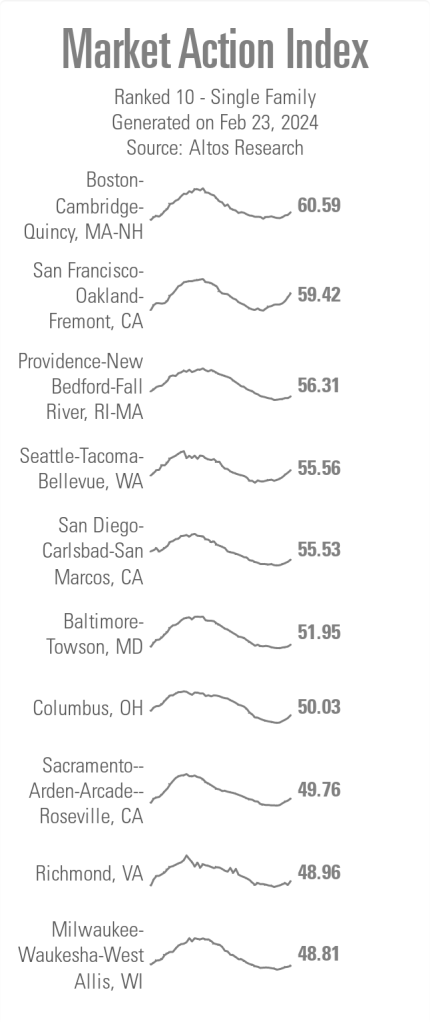
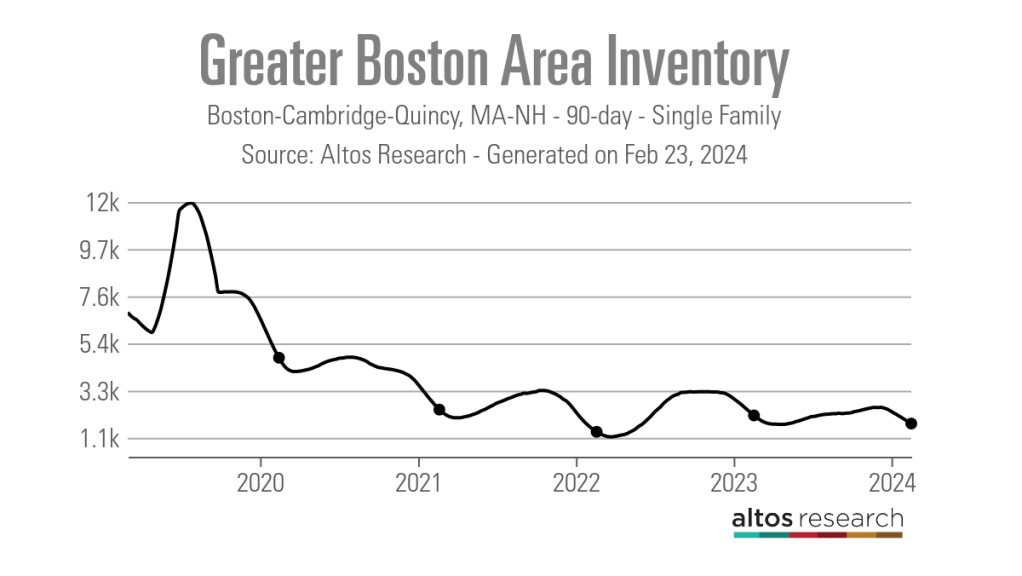
Additionally, the entire state of New Hampshire had just 985 active single-family listings as of mid-February, compared to 3,872 listings just prior to the pandemic, according to Altos.
“There is a significant lack of inventory, to the point where there are so many more buyer that are desperately trying to find a home, than there are options out there for them to even potentially find anything,” Nicole Howley, a Bedford, NH-based Coldwell Banker Realty agent, said. “It is an extremely challenging real estate market right now.”
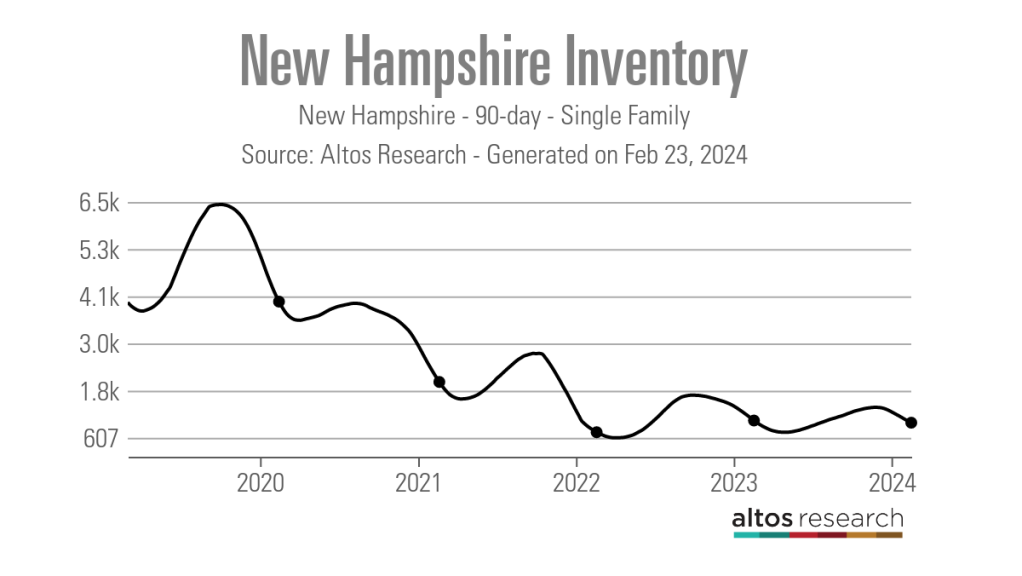
According to Chip Stella, the director of brokerage at New England based LandVest, interest rates are to blame for the lack of inventory.
“I think the big driver of the lack of mobility and inventory in today’s market is the interest rates,” Stella said. “We’ve got this total rate-lock event.”
In recent months, however, as mortgage rates have stabilized and even come down slightly, agents like Danzey say more buyers have come to the market, adding even more pressure to the already strained inventory situation.
“When we saw rates start to come back down into the 7% range and then below 7%, it instilled some confidence in buyers to get back out there,” Danzey said. “I think the consumer confidence, overall is starting to come back and the people that can afford to are back out there looking at properties and making offers.”
Although rates may be keeping some sellers in their homes longer than they wanted, Stella said he is not seeing as great an impact on buyers as he is sellers.
“People need to buy houses, where the interest rate is 5% or 7%, they are still buying,” Stella said. “We are seeing a lot of life events — birth, marriage, divorce — and that is really what is driving the market.”
While agents say there is no doubt that the market is hot, it is certainly cooler than the height of the pandemic housing market.
“That was like a whirlwind,” Howley said of the pandemic market. “Lately I haven’t seen as many appraisal gaps, but there are still plenty of multiple offer situations.”
Despite frequently finding themselves facing multiple offers and low inventory, Howley said buyers are appearing to be pretty resilient.
“I don’t see a whole lot of buyer fatigue yet, but I think that it is important as an agent to set the expectations for the buyers, so that when they get out there, they know what the market is like,” she said.
Further south in the metro area, Stella sees things a bit differently.
“Even though we aren’t seeing 20 or 30 offers any more there is still some buyer fatigue,” Stella said. “They just feel like it is a black hole, like they aren’t going to win, so why even bother.”
Due to the low inventory and high demand, the 90-day average median days on market in the metro area as of Feb. 16 was 49 days, which is the same for the state of Massachusetts and slightly below the 56 days reported in New Hampshire.
Additionally, home prices in the area remain elevated. The 90-day moving average median list price in the metro area was $879,000 as of mid-February, according to data from Altos Research. This is $589,000 median list price reported roughly four years ago, prior to the pandemic, and $100,000 over the median list price reported the same time last year.
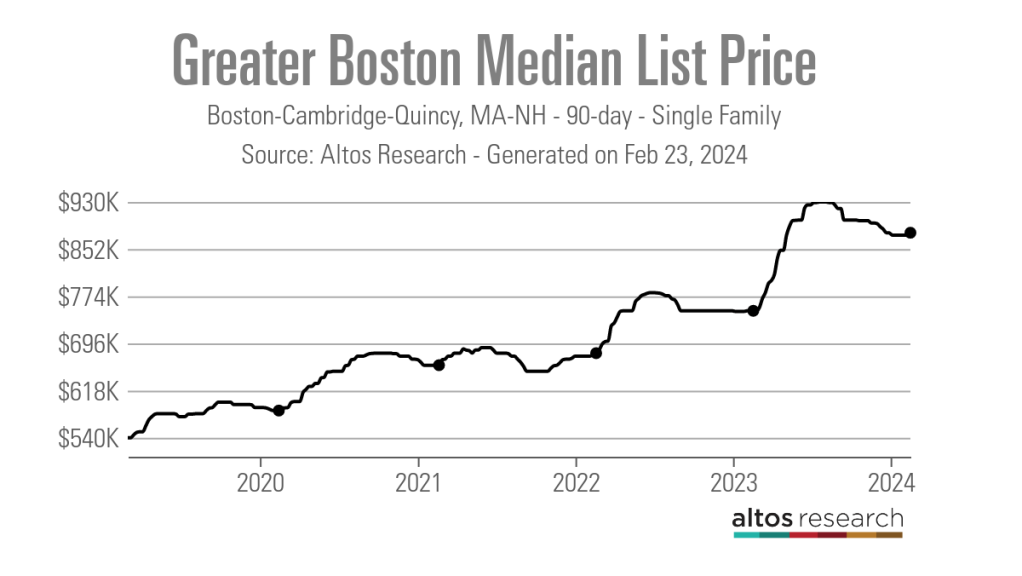
“There are a lot of people out there who can’t justify or grasp the understanding of spending the amount of money that they have to spend to get into a home,” Howley said. “I’m a real estate broker and I have a really hard time seeing what someone has to pay to get a house. It is hard to be able to justify that even to myself.”
As the temperatures begin to warm up in the Greater Boston area and the crocus and daffodils begin to bloom, local agents believe more inventory will also arrive.
“We do expect more inventory around April 1st, but I feel like some savvy sellers have already gotten to the market,” Stella said. “We saw some really great quality inventory come on in January and I joked with some agents that maybe spring now starts in February.”
Even if more houses are on the market, Stella said absorption still won’t be an issue.
“Properties in great locations, priced correctly, with good school districts and other desirable things buyers are looking for won’t last long,” Stella said.




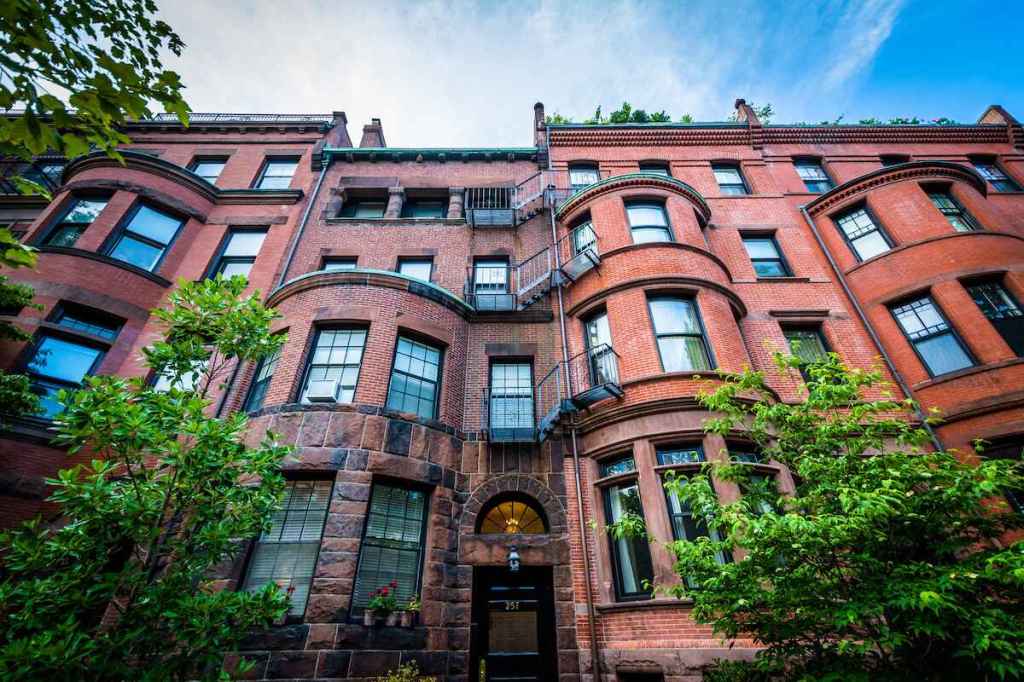

The Metro Boston area includes more than Southern New Hampshire and the North Shore of Boston.
Hey there, thanks for the comment. Yes, that’s true! I’ve tweaked the intro slightly to avoid confusion. For this article we’re specifically looking at the Boston-Cambridge-Quincy MSA, which includes the North Shore and Southern New Hampshire. There are other MSAs within Greater Boston, including Providence-New Bedford-Fall River, that are also among the nation’s toughest housing markets.